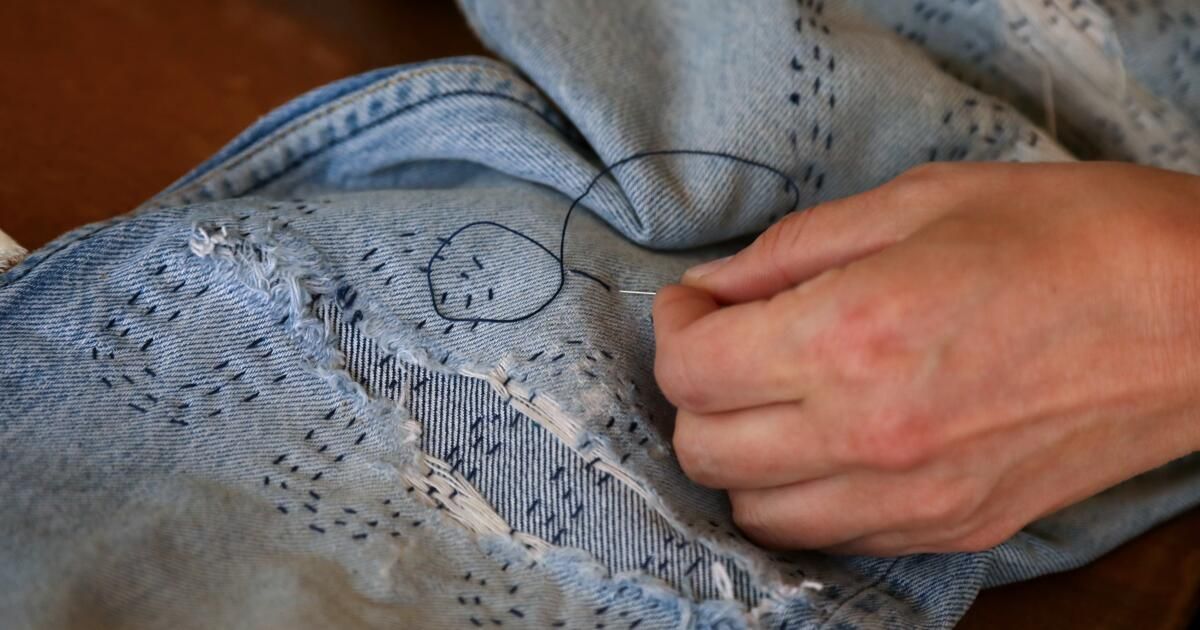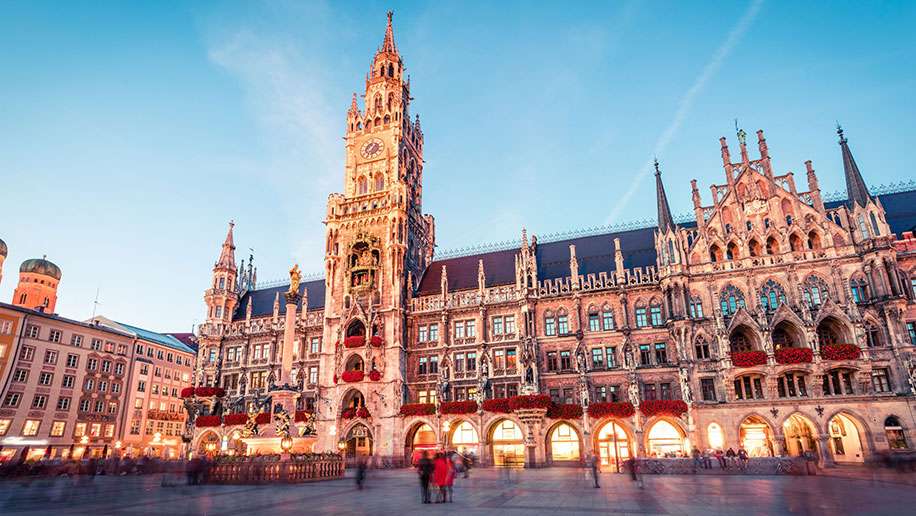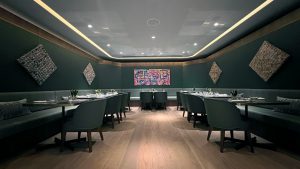It's a rainy Wednesday afternoon at Shiloh Tea, a moody, dimly lit gathering spot in the Arts District, where a dozen students, including me, sit on round white cushions on the floor, sipping tea of carob and cardamom and look uncertainly at the piles of denim on the low tables in front of us. Each of us has removed a torn or damaged item of clothing from our closet, hoping to prolong its life and keep it out of the Goodwill bin.
We are not here to hide our healing work like talented seamstresses would, making tiny, almost invisible stitches hidden under seams or camouflaged by the color of the denim. Instead, Kim Krempien and Betsy Flores, clothing designers and founders of the creative reuse collective. I Study Other LivesWe urge us in this workshop to make tremendously colorful visible stitches which are also part of a broader creative design. To inspire our big, bold designs, Flores and Krempien have placed an inspiration board at the front of the room, showcasing the styles of some of their embroidery influences: Maison Margiela, Jil Sander, Sashi.Coand Yohji Yamamoto, for starters. In one inspirational photo, a large multicolored butterfly takes up the entire seat of a pair of vintage Miss Sixty jeans, while in another, bright silver flowers stretch across a Dries van Noten jacket.
“You think you have to take the clothes to the tailor, who makes the stitches perfectly invisible, but the mending can be very visible, and that's our preference,” Krempien says.
Using electric blue and cherry red thread, we stitched our denim rips together over a soft chatter, creating decorative cloud and triangle designs in the teahouse. At my table, a participant is doing his first stitch under Krempien's direction, while a fashion student creates swirls on a denim jacket. Flores comes to cheer us up and congratulates our progress. Sewing cloud outlines into the back pocket of my black jeans makes me feel like a little child doodling, and I get lost in the process as two hours pass. Our evening activity is quiet, alcohol-free, and relaxing—a vibe I wouldn't have expected from a gathering of twenty- and thirtysomethings, but which a neighbor informs me is the norm at Shiloh. We left with needles and thread to continue our projects at home.
Betsy Flores, left, and Kim Krempien, co-owners of Other Lives Studio, want to teach people how to give new life to discarded clothing.
(Genaro Molina / Los Angeles Times)
Flores and Krempien are part of a creative recycling and repurposing movement sweeping Los Angeles, a movement that eschews humble Stitch-and-Bitch sewing classes and crunchy crochet hats for an eclectic, contemporary fusion of high fashion. , Japanese repair techniques and DIY. Punk sensibility and environmental sustainability. Like in creative reuse stores like Suay sewing store in DTLA and Creative reuse of remains In Pasadena, the goal is not so much to make a knitted scarf for your dad, but rather to tear up his old dress shirt and transform it into a multicolored kimono, all with minimal effort.
Other Lives calls itself a “redesign atelier,” highlighting its intentions to elevate old clothing to appear as bold and experimental as high fashion, at minimal cost to both the wearer and the environment. Other Lives doesn't ask fashion lovers to leave the scandalous world of high-end style behind; his workshops list seasonal influences from specific designers: for the slit T-shirt workshop, it's Rick Owens Spring 2018, and for the marble dye workshop, it's Dries Van Noten Spring/Summer 2021. “We want to walk the line between being accessible and inspiring. ”says Krempien.
The founders come to the culture of creative reuse from their own experience in high fashion, working with Nordstrom, Revolve and Vince. They met in 2016 at an industry event and eventually began a passionate dialogue about sustainable fashion while working together to design and develop capsules for Nordstrom's private label collections. Frustrated with fast fashion toxic pollution from the Global South and The huge textile industry of Los Angelespromised to start Other Lives, which would give new life to discarded clothing by facilitating eye-opening workshops that include metalwork and fabric paint.
“Fashion is an unsustainable process because it produces too much to be a viable outlet,” Krempien says. “With original design manufacturing, you produce 30 to 40 or more samples per season, making four collections a year, and that really adds up and becomes a space issue and a moral issue. “I couldn't bear to keep thinking about creating so many unused garments, knowing that even when these samples go down the path of clothing donation, it is a broken system, where most of it ends up in landfills or is sent to another country.”
As they prepared to launch the Other Lives website in spring 2020, the pandemic canceled their first in-person workshop. They moved to online workshops, taught exclusively via Zoom for two years, and began in-person workshops in 2022.
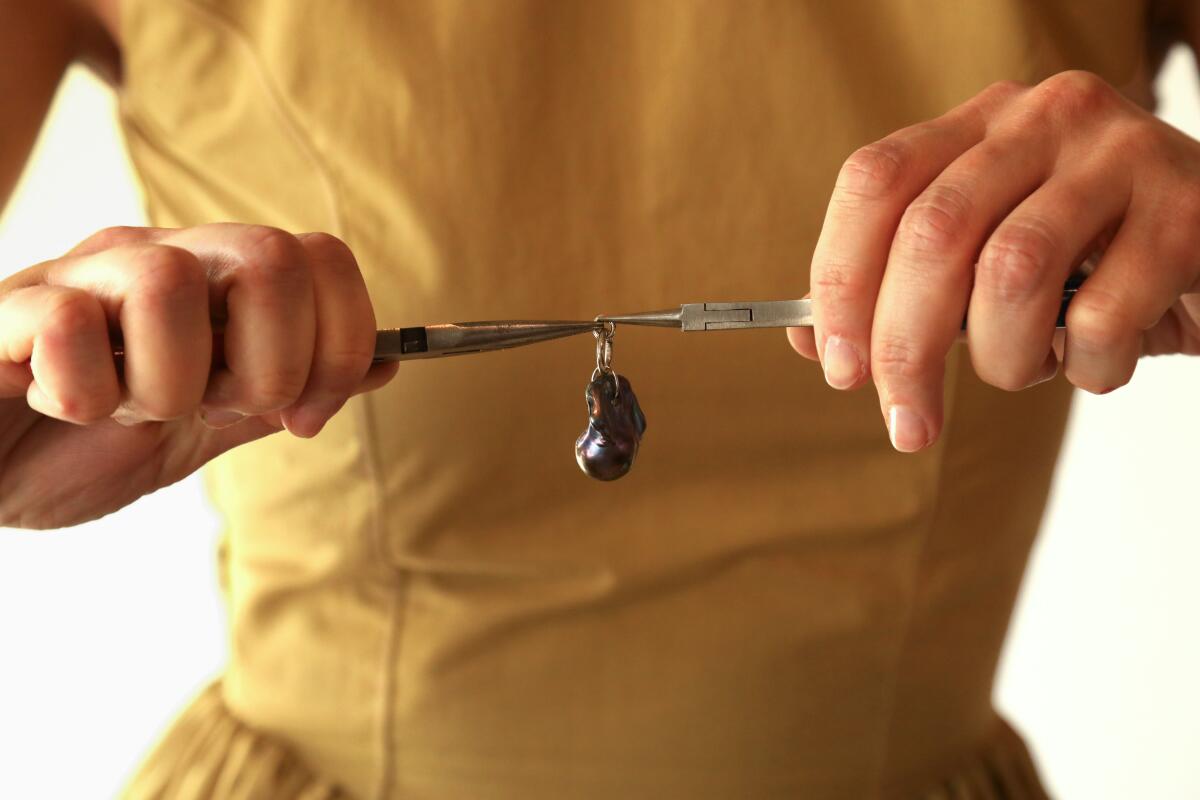
Kim Krempien works in a jewel.
(Genaro Molina / Los Angeles Times)
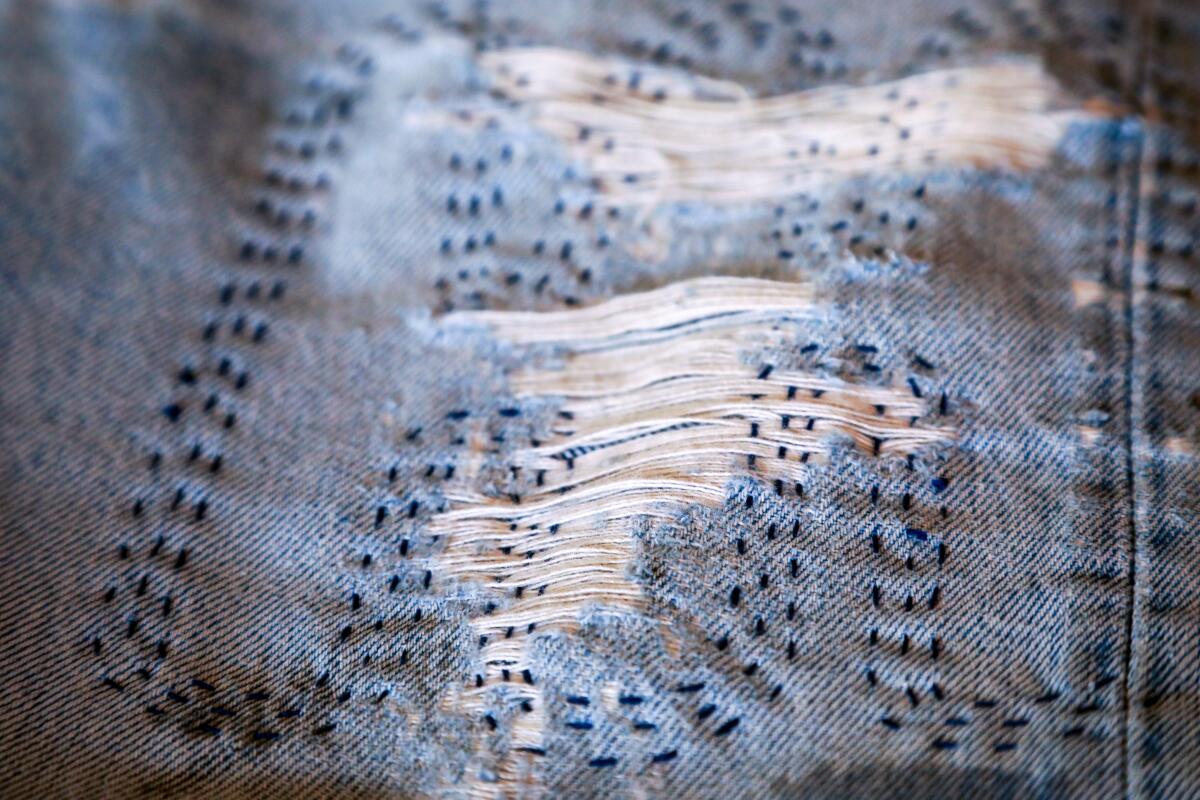
Creative stitching on a pair of recycled jeans.
(Genaro Molina / Los Angeles Times)
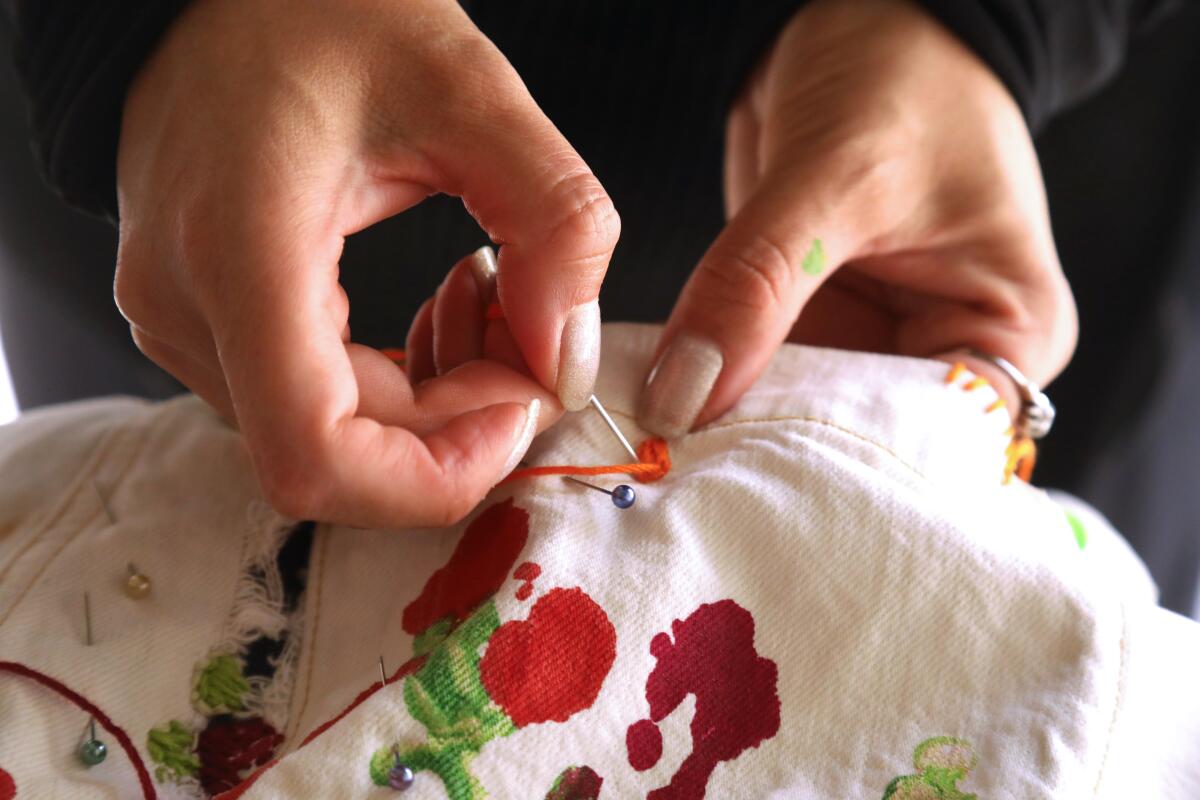
Betsy Flores embroiders a pair of pants painted by Kim Krempien.
(Genaro Molina / Los Angeles Times)
Flores says that his skills, from strategic lacing design to jewelry collage, are easy for anyone to learn, even someone who has never sewn or mended a necklace. “When you think something is not feasible or beyond your abilities, you almost feel like you shouldn't even try,” Flores says. “Our workshops help relieve the pressure, because you are in a community of people learning and people feel less intimidated and more open to trying and trying not only what they have learned, but anything. It is truly an enriching opportunity when it comes to creativity.”
Other Lives offers a starting point for uncertain recyclers not only in the form of its Workshops in Venia Studiobut also through his Blog, Tik Tok, instagram and Youtube videos. Last year, students in the jewelry collage workshop deconstructed and recombined old metal pieces, charms, pearls, stone beads, crystals, rings and chains into mixed media jewelry, while students in the lace workshop Enlarged garments that no longer fit creating laces with eyelets, loops and drawstrings.
Most fashion items are used only seven to 10 timeswhat some are doing Consumers question not only its durability., but its versatility to use them several times. Flores believes that part of the frustration is the lack of understanding of a garment and how it can be creatively modified. She says that when a consumer sews or patches an item, they are less likely to throw it away later. “When you give a second life to a piece of clothing by editing it, you're creating a connection with the piece,” she says.
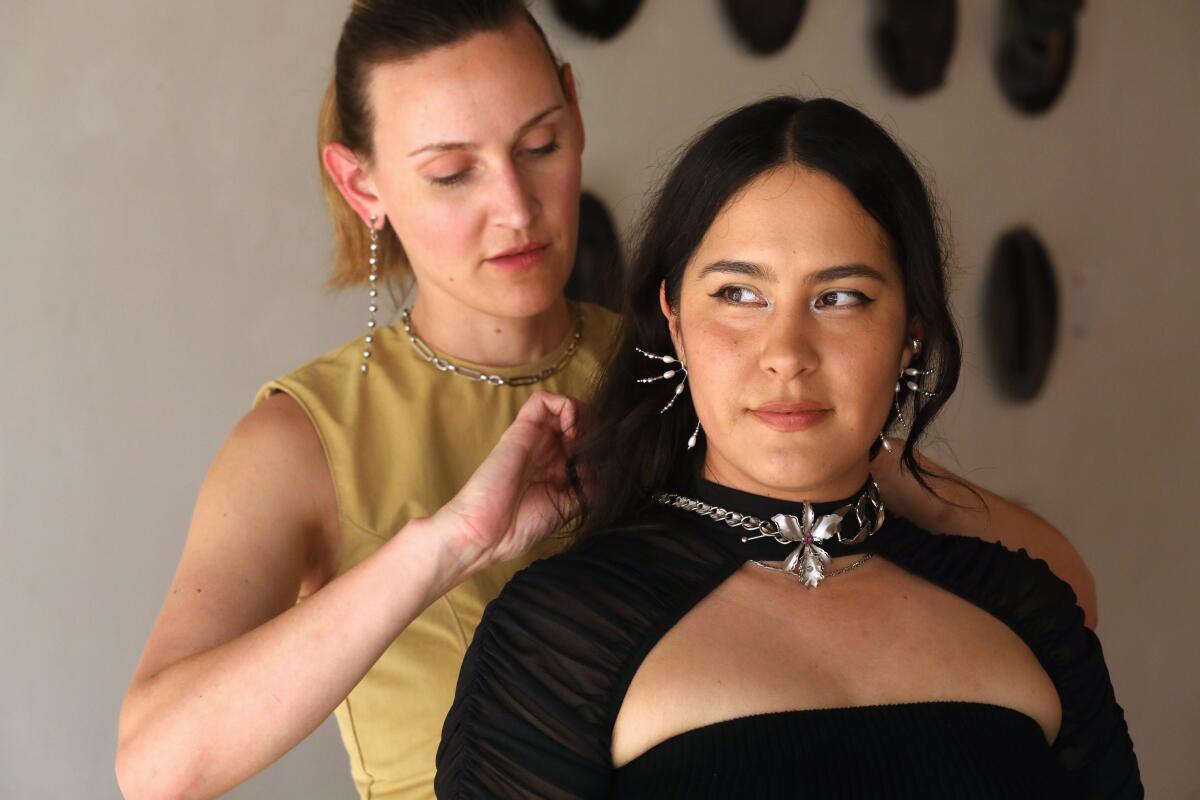
Kim Krempien, left, puts a repurposed necklace on Betsy Flores.
(Genaro Molina / Los Angeles Times)
For Flores, there is meaning and spirituality in the clothes we wear. Following in the footsteps of the Marie Kondo phenomenon, which incorporated the Shinto-influenced practice of thanking an item for its service, the name Other Lives implies the imbued power of respecting an item of clothing enough to revive it. Other Lives gives meaning to old and discarded clothing, drawing on the practices and philosophies of Japanese creative techniques such as suminagashi dyeing, sachiko embroidery, and kintsugi pottery repair to see the redemptive spirit in an item, to repair the irreparable. “When you go to a thrift store or go to a flea market, from the moment you pick up something, you can't help but wonder what life it had,” says the designer. “I believe things have energy, for whatever they mean to you and the memories and moments you created with them. Everything has potential and that also applies to us humans.”
But empowering others to be creative and renew their own clothing hasn't been enough for the duo, environmentally speaking. Other Lives also reuses development waste, including soles and foam, from its partner companies, including Deckers Brandsowner of Ugg, Hoka and Teva, among other brands.
In the future, Other Lives hopes to expand its educational offerings from one or two workshops per season to a variety of diverse seasonal programming, using the donations it receives. The collective also hopes to create DIY recycling kits to sell, which recyclers at home would use while following Other Lives tutorials on YouTube. A creative reuse festival or retreat might even be in the cards one day, Flores says.
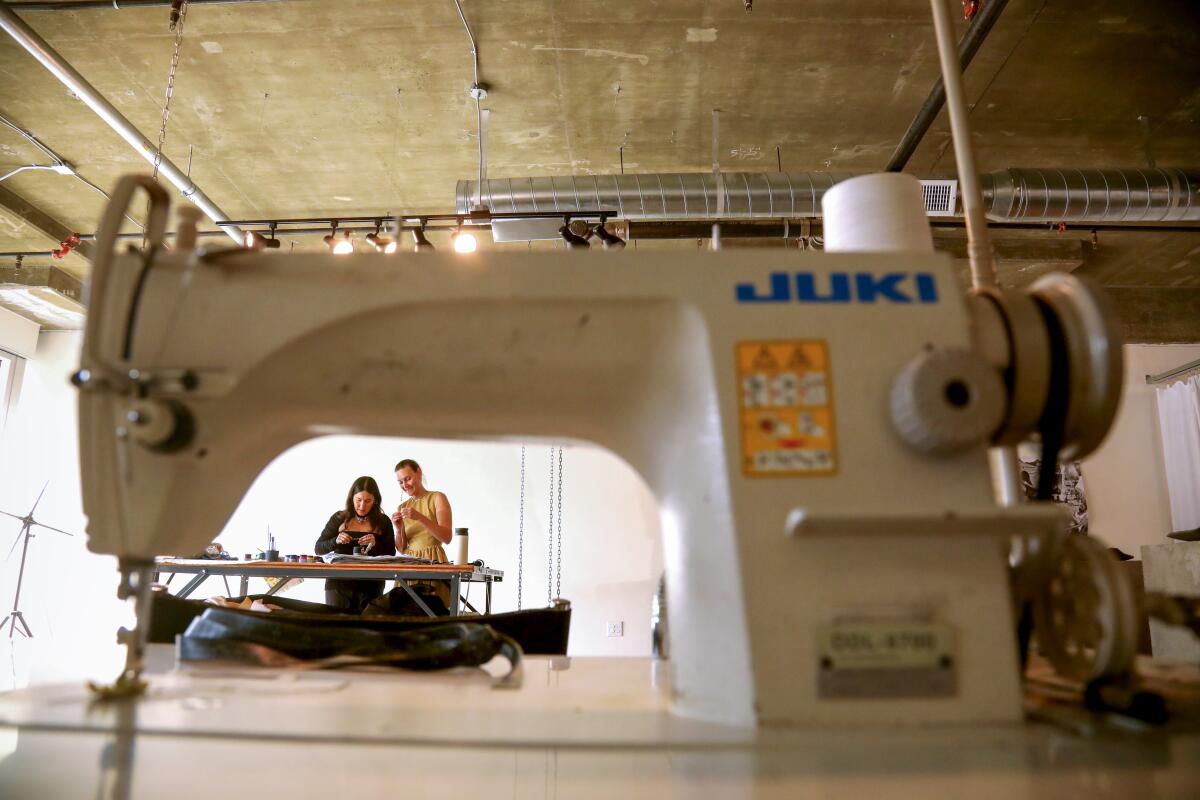
The couple believes that learning skills like strategic lacing and jewelry collage can be enriching.
(Genaro Molina / Los Angeles Times)
In the meantime, Flores and Krempien urge those who can't attend a workshop to log on to social media for inspiration. “Search 'DIY project,' 'upcycling,' or 'creative reuse' on Pinterest, TikTok, and Instagram,” says Krempien. “It's not just us, which is really surprising, because when we started we didn't know any other recyclers. You will find many projects to inspire you.”
What you can end up with is an item unlike any other in the world, a unique work of art, which is the most fun thing about recycling. “Who doesn't want to feel unique and feel like a piece is personal to me?” says Flores. “It can also start a conversation, because when people see it, [they] “They will want to try it themselves.”

